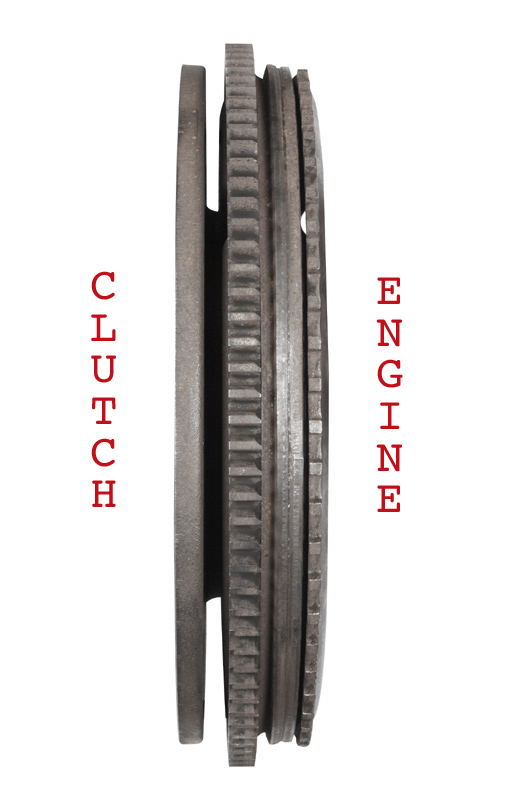D40 NAVARA R51 PATHFINDER ORIGINAL DUAL MASS FLYWHEEL
To improve fuel efficiency, modern engines deliver high torque at low rpm. This results in each power stroke of the engine generating a power pulse which is more noticeable in a turbo charged 4 cylinder engine than in V8 running at the same rpm. A V8 has more power strokes in each crankshaft revolution and this produces a smoother delivery of power. The power stroke pulses were once referred to as labouring the engine. The Dual Mass Flywheel (DMF) was designed to smooth out the power stroke pulses at low rpm. This sounds sensible until you understand how the DMF works and why it fails.
The DMF is constructed in two main components. The first is the section that bolts to the crankshaft and has the ring gear and the crank angle pick up notching plate. The second piece is 10 mm thick disc. The clutch cover bolts to this plate. Holding the two components together is a bearing. Between the two components there are springs that dampen the engine power cycles.
Why does it fail. High torque engines under conditions such as towing and heavy acceleration put high loads on the dampening springs and the springs collapse. This is a very common condition with D40 and R51 vehicles. It is easily recognized by two symptoms

Animation showing the Nissan D40 Navara R51 Pathfinder Dual Mass Flywheel Spring Failure turned by hand. When a breaker bar is used to rotate the crankshaft far more wear can be seen.
Three Ways to Check for Dampening Spring Failure
1. On level ground driving lightly accelerate then back off on the gas. Do this a few times and you will hear a click clack noise. That is the noise of collapsed dampening springs.
2. Put the car in direct drive with the hand brake on. Put a socket on the front crank shaft bolt with a breaker bar and rotate the crank clockwise and counter clockwise. If the dampening springs have failed there is a lot of movement before it takes up solid. The movement can be as much as 180 deg.
3. Remove the rubber boot from the bell housing and release bearing fork, using a flashlight and log screwdriver you will be able to rotate the clutch cover in both directions.

Last updated May 2016



